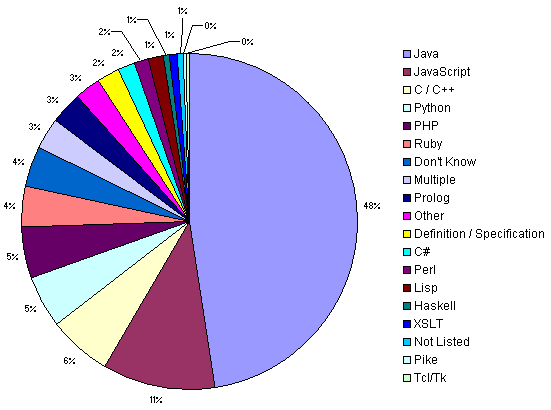
Version 11 Shows Semantic Web Tools Announcements to be on a Furious Pace
After a two months hiatus, I have just updated AI3's listing of semantic Web and -related tools to version 11; follow the links below.
This version adds 72 new tools — one of the largest additions ever — since the last update on September 16, bringing the new total to 650 tools.
Like prior versions, this new Sweet Tools listing is provided either as:
- A lightweight online database display using Exhibit
- A simple table for quick download or copying, or as
- A full RDF download in either RDF/XML or N3 format.
Background on prior listings and earlier statistics may be found on these previous posts:
- New Release: 578 Semantic Web and -related Tools (Sept. 16, 2007)
- 542 Semantic Web and -related Tools (Jun. 19, 2007)
- Listing of 500 Semantic Web and Related Tools (Mar. 11, 2007)
- Sweet Tools Updated to 420 Tools (Feb. 7, 2007)
- Converting 'Sweet Tools' to an Exhibit (Jan. 22, 2007)
- Permanent Sweet Tools Listing — 400+ Tools and Counting!< (Jan. 5, 2007)
- Comprehensive Listing of 250 Semantic Web Tools (updated) (Oct. 4, 2006)
- Comprehensive Listing of 175 Semantic Web Tools (Sep. 22, 2006)
- Current Listing of 70 Semantic Web Tools (Aug. 12, 2006)
With interim updates periodically over that period.
In thanks to Henry Story, whose chat note prompted me to post this long overdue update, I have also included some of the tools breakdowns he enjoys.
Some Stats
Here is a table of tools categories, showing both the last breakdown from about 9 months ago when there were 500 tools in the listing, and today with 650 tools:
| 3/11/2007 | 11/18/2007 | Category |
| 11 | 24 | Ontology Mapper/Mediator |
| 3 | 6 | RDF Editor |
| 2 | 4 | RDF Generator |
| 13 | 23 | Query Language or Service |
| 19 | 32 | Search Engine |
| 23 | 37 | Browser (RDF, other) |
| 20 | 30 | RDF (general) |
| 23 | 33 | NLP/Language Processor |
| 15 | 21 | Visualization |
| 29 | 40 | Composite App/Framework |
| 9 | 12 | Ontology Editor |
| 22 | 28 | Wiki- or blog-related |
| 32 | 39 | Ontology (general) |
| 5 | 6 | Semantic Desktop |
| 22 | 26 | Reasoner/Inference Engine |
| 26 | 30 | Annotator |
| 29 | 33 | Database/Datastore |
| 8 | 9 | Data Language |
| 48 | 53 | Miscellaneous |
| 30 | 33 | Parser or Converter |
| 43 | 45 | Information Extraction |
| 22 | 23 | Wrapper (Web data extractor) |
| 3 | 3 | Description or Formal Logics |
| 4 | 4 | Harvester |
| 25 | 25 | Programming Environment |
| 8 | 8 | Validator |
| — | 3 | Chat-related |
| — | 3 | Data Presentation |
| — | 3 | Mashup/Meshup Framework |
| — | 2 | Rules and related |
| 6 | 12 | NOT ACTIVE (???) |
| 500 | 650 |
The fastest growing categories are listed first, with RDF, ontologies, and search growing the most. Note some categories have been added and others are being re-classified or delisted as time and familiarity with the listing grows. Certain areas of current interest, such as NLP, also see increased listings as a result. Of course, all such categorizations have a degree of arbitrariness.
As with the last survey, Java and JavaScript are dominant languages, with considerable growth. Python and PHP have also shown higher than average growth. Ruby appears to have stagnated, and many other languages are in second-tier positions:

You’ll be pleased to see, Henry, that Java is still holding serve on market share!
Note: Because of comments expirations on prior posts, this entry is now the new location for adding a suggested new tool. Simply provide your information in the comments section, and your tool will be included in the next update. (Hopefully, that will not take another two months!) 🙂






KMIR describes an ontology-based tool for supporting consulting agencies in accompanying an organisation's Knowledge Management (KM)implementation. Best Practice Cases (BPCs) of successfully conducted consulting services are captured by the system's ontology-based case base and reused for further KM introduction services. The system synergetically combines technologies of the Semantic Web with those of Case-based Reasoning.
ONTOKNOM is an ontology-based software infrastructure for retaining and maintaining theoretical Knowledge Management (KM) Maturity Models (ONTOKNOM) by using a KM Maturity Model Ontology. Moreover ONTOKNOM provides technical means for designing a web-based system that supports the form-based self-evaluation of an organization with regard to its current maturity level, as well as for providing concrete organizational recommendations and measures in order to achieve a higher one.